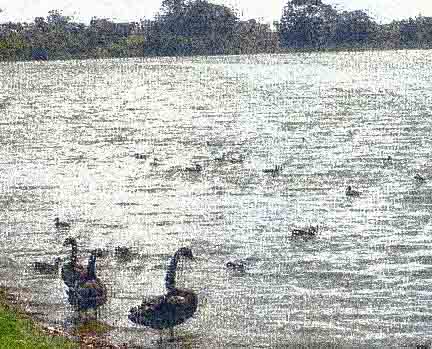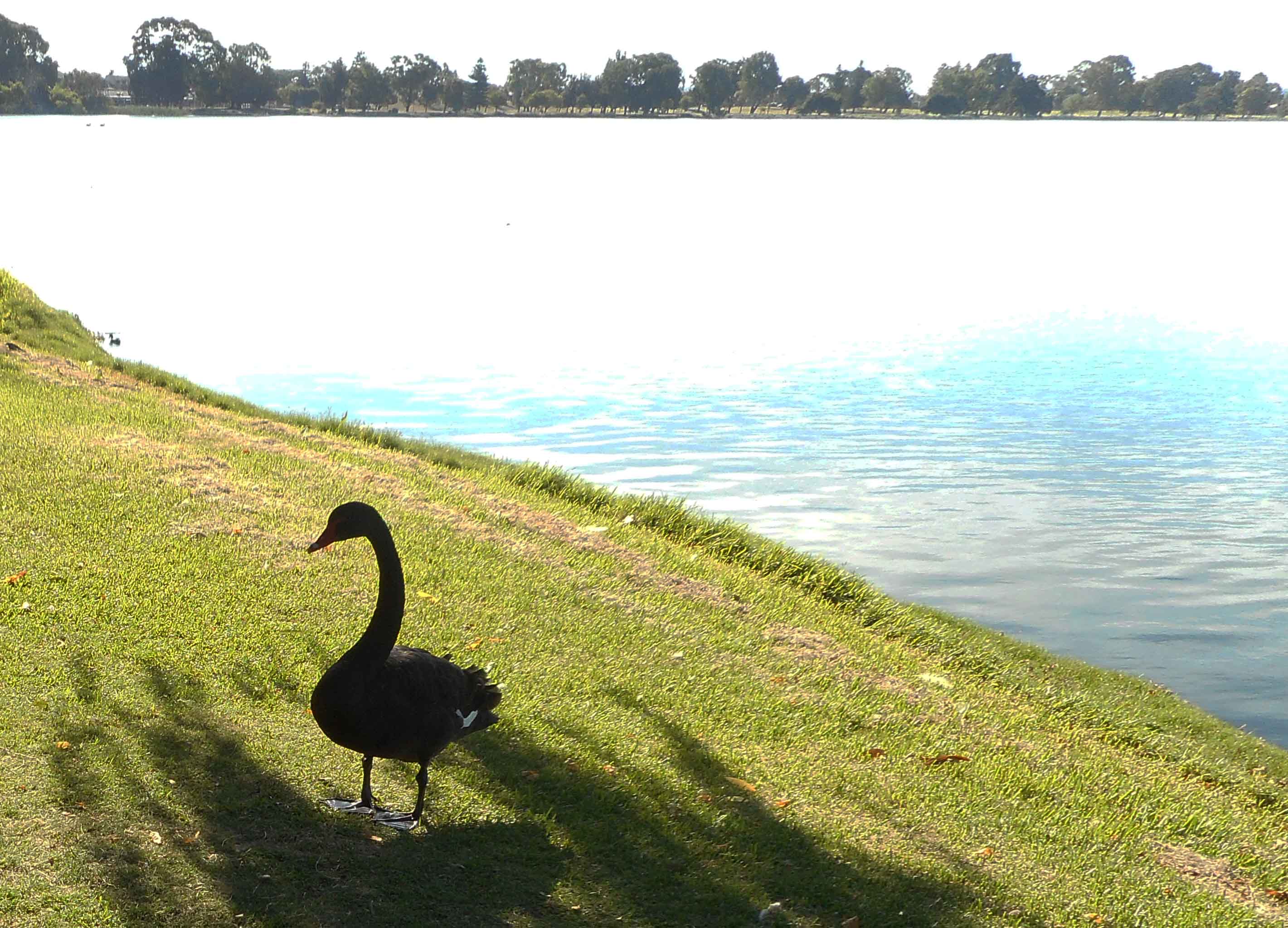As Karl is almost a Perth native and I am a newcomer, he is eager to show me around. He points out that the black swan featured in the Western Australian coat of arms and recommends a visit to the swans that lived at Lake Monger, a suburban lake surrounded by parklands. Karl meets my newspaper brief to the letter. His picnic includes German salami, antipasto, strong cheese, and brown bread. He brings a blanket, a cooler, and soft cushions. (For more erotic trysts in the national park, he adds a mosquito net, strung from a convenient tree.)
I’ll always remember our visit to the black swans.
Near the shelter of a few gum trees, we have a small corner of the manicured park to ourselves, with lemony grass extending right to the rippling water. Karl tells me about the trees bordering the freeway: coolabahs with white bark, some odd eucalypts, Norfolk Island pines, date palms, and some old oaks. A brilliant red Callistemon (bottlebrush) stands behind us. The lake’s birdlife is lively: lots of gulls, Mallee hens, white pelicans, cormorants, and a variety of other waterbirds.
Then there are the swans, always in pairs, diving for grass at the water’s edge, only meters from our picnic spot. Water droplets glisten on their necks, falling from their striped red beaks.
The picnic with the black swans is as unpretentious as Karl is. He sets up our picnic under a weeping willow. Even with the roadway nearby, it feels quiet and private. We don’t precisely “visit” the swans; we share their territory for a few hours. We make cooing swan-noises to them, which they ignore (though passers-by laugh a bit).
There is something about the swans’ personal space that fascinates me. While they never touch, they always appear to be “in sync”. It is as though their auras are intertwined, so that when one moves an invisible force — or thread — draws the other into alignment, like a dance. This happens as they swim, fluff and peck at their luminous back feathers, dive deep into the muddy bank for water weeds and even waddle up to inspect us.

Years later, Karl started calling me “Waddles”, a nickname that might have birthed that afternoon.
After his death, Karl continued to reinforce the swans’ messages.
Through clairvoyant Angela, Karl sends me a message on 16 July 2016, six months after his death.
When I tell Karl I’ve received it, he says, “I’m so glad the message about the Black Swans reached you. I wanted you to know how important love and loyalty are. It’s good to love – and be faithful. And you deserve (and actually need) love in your life – romantic love.”

Don’t misunderstand me — these gentle creatures are also formidable. When the larger one (the “guy” one) starts to waddle up the bank (maybe in response to my cooing), his stern, uncompromising stare and bright energy frighten me. Those red eyes! I do not feel safe from the one on the bank — if he had charged me, I would have run.
As Karl leads me by the hand around the edge of the lake, his descriptions reveal as much about him as a man as they do about the swans. Black swans are staunchly loyal, and throughout history, they have represented messages of love in relationships. In many cultures, they embody the healing powers of love, protection, union, and partnership. They are the most romantic birds: they form long-lasting, monogamous bonds and are known for their tenderness and care. Associated with poetry and song, in some cultures, they are revered as symbols of an open, heroic heart, expressing spiritual love with wisdom.
After we return to our blanket and enjoy a glass of chilled rosé, Karl takes my hand in his and gently explains that to embody black swan energy is to be vulnerable and open to fear and to express your romantic streak creatively and with tenderness and care. Black swans are dreamer animals, known for savoring and enjoying the journey. Significantly, literature depicts these loving, open-hearted birds as beset by suffering and trials. Enlightenment is the fruit of their tribulations.
Karl felt that we could learn much about love just by spending time watching the black swans.
